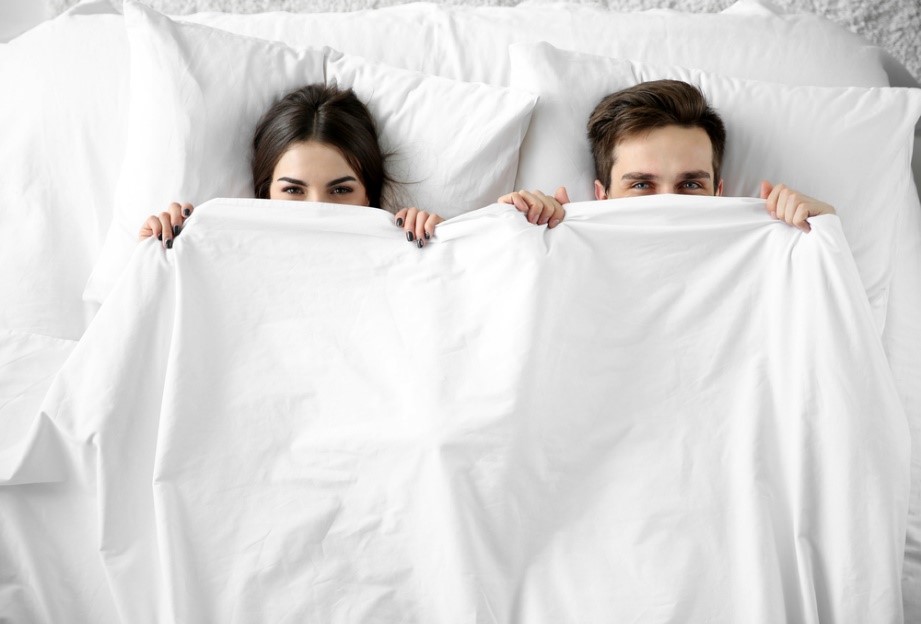Sadly, you might be more susceptible to allergens than ever when you crawl into bed.
Lots of things that irritate your nasal passage and skin collect in your bedding – and you could also have an allergic reaction to your sheets! The solution? A healthy combo of hypoallergenic bedding, regular washing, and dehumidifying can usually do the trick.
At Layla Sleep, we believe better sleep translates to a better life. We’re here with tips for understanding hypoallergenic bedding, how to sleep better, and why a simple change like converting to well-washed bamboo sheets could change your entire sleep experience.
What Does Hypoallergenic Really Mean?
Unless you’ve been living under an allergy-free rock, you’ve probably heard the term “hypoallergenic” thrown around a lot. People use it in reference to face creams, dogs, and more. But what does it really mean?
The FDA says there are no federal definitions or standards for calling something hypoallergenic, but they’re more concerned with cosmetics and food than what you sleep on.
While there is no official definition, we can still turn to the general understanding of hypoallergenic products to figure out what the benefits are.
Long story short: If a product is less likely to produce an allergic reaction in most people than its alternatives, it’s considered hypoallergenic.
For bedding, this means that fabrics that are less likely to house dust mites and other allergens. Similarly, some fabrics cause fewer allergic reactions because they use a shorter list of chemicals in the creation process.
Any way you cut it, there are some clear differences between hypoallergenic sheets and other options. Hypoallergenic bedding uses fabric that:
- Is naturally resistant to common allergens, including pollen and dust.
- Is inhospitable to dust mites.
- Is breathable and antimicrobial to avoid mold growth.
- Is less likely to cause any allergic reaction or breathing difficulties.
Types of Hypoallergenic Bedding
There are different types of hypoallergenic sheets and bedding to choose from. The right option may depend on your climate, comfort, and other subjective needs. For instance, wool is hypoallergenic — but unless you live in a cold climate and it’s the middle of January, you may get too hot. Wool can also get pretty scratchy.
Here are three types of naturally hypoallergenic fabrics that are often used to make bedding for allergy sufferers (and anyone who loves clean sheets, honestly).
- Cotton: Being a natural fabric (as opposed to synthetic), cotton can produce some of the best sheets for allergies.It’s breathable, so it’s harder for certain bacterial allergens to grow. Organic cotton is particularly good for people with allergies who are waking up sneezy or itchy.
- Bamboo: Is bamboo hypoallergenic? You bet it is. It not only naturally deflects dust mites and other common allergens, but it keeps you about 3 degrees cooler than cotton on average. Harvesting bamboo is also a lot better for the environment than harvesting cotton.
- Silk: You might associate silk sheets with 80s rom-coms, but it’s also incredibly hypoallergenic bedding! On the downside, the care instructions are far more high maintenance than sleeping on either cotton or bamboo. We’re not saying you shouldn’t buy silk sheets, but we are saying you might get tired of washing them alone on a gentle cycle with mild detergent.
Identifying Allergies
OK, but do you need hypoallergenic bedding? For some people, it’s a nice addition to their home. For others, it’s the difference between waking up refreshed, and having a pile of dirty tissues by the side of the bed every morning.
If you notice any of the following symptoms regularly, you may be suffering from nighttime allergies and you may be the perfect candidate for anti-allergy sheets and a hypoallergenic mattress.
- A runny or stuffy nose. If you wake up a lot with nasal issues, you probably have an allergy to dust mites. About 10% of people who have at least one allergy are also allergic to dust mites. These tiny bugs feed off your dead skin cells and they irritate your nasal passage.
- Watery eyes. Irritated eyes are also a sign that dust mites are tormenting your nose and throat throughout the night. So rude.
- Coughing and wheezing. Are you fine throughout the day, then feel like you develop a fast-moving cold whenever you lay down to sleep at night? Allergies are probably to blame
- Skin irritation. Sometimes your allergies show up as itchy skin – or worse – visible symptoms like hives. This could mean you’re allergic to a new fabric softener or detergent, but it could also indicate that your sheets are covered in mites or other allergens.
- According to the Mayo Clinic, a dust mite allergy can also manifest in swollen, blue skin under your eyes. You can also suffer from related facial pressure and pain. What you’re chalking up to a sinus infection or “bags” under your eyes could actually be an allergy!
If you recognize yourself in these symptoms, hypoallergenic bedding could make you less prone to significant sleep disruption. Keeping your bed clean and your bedroom free of allergens will also help.
Cleaning Tips
Buying hypoallergenic bedding is only the beginning. If you want to stay allergen–free at night, you must also clean your sheets often and treat your bedroom a little more like a hospital room than a dorm room. You may also want to get a hypoallergenic mattress or pillow cover to stop mites from digging in.
Here are some tips to live by that will kill those pesky mites and get rid of anything else you might drag in after a day spent outdoors:
- Start washing your sheets more often. According to the Asthma and Allergy Certification Program (which is endorsed by the Asthma and Allergy Foundation of America), sheets should be washed weekly in water that is at least 130 degrees Fahrenheit.
- Vacuum around your bed using a machine that has a HEPA (high-efficiency particulate air) filter. An anti-allergy vacuum with a HEPA filter can capture up to 99.7% of airborne allergens that might otherwise creep their way into your bed. If you can swap out the old carpet in your bedroom for hardwood flooring, go for it. Carpet collects way more allergens than wood (just be sure to clean baseboards to avoid mold growth no matter which flooring you have).
- Run a dehumidifier in your bedroom during warm months, particularly if you keep your windows open while you sleep. Certain allergens, particularly mold and mites, thrive when the humidity in the room is over 50%. Some dehumidifiers also have a filter that keeps air purified.
- Shower at night. You may have pet hair, pollen, and other common allergens on your clothes and skin at the end of the day. Even if you spend most of your time in the office – one walk through a pollen-filled breeze could mean you are inviting irritants into bed with you. Showering at night (even a quick rinse) will keep your sheets cleaner.
- Wash your dog! No, really, either wash your pooch regularly or kick him or her out of bed. A lot of allergies and mites that make their way onto your sheets got there because you were snuggling with your four-legged friend. Brushing and washing the pollen out of a dog means they’re not dragging allergens into your sleep space.
Layla Sleep for Allergies
Hypoallergenic bedding isn’t the solution to 100% of allergy problems. But it’s sure a good start! The right sheets are an important part of any comprehensive plan to kick your nighttime allergy habit. You’re supposed to be dreaming, not sneezing so loud you wake up the neighbors.
In addition to our bamboo sheets made from hypoallergenic bamboo viscose, Layla also makes a memory foam mattress and memory foam pillow that will change your life. No, really. You’ll be sleeping in like you used to do over spring break in elementary school.
Our memory foam products are infused with copper, so they wick away body heat and naturally fight many of the germs that show up in bed. On top of that, our mattress has a soft side and a firm side – you can take your pick! Our pillow has a removable cover that can be washed alongside your sheets. Take that, dust mites. See you never.
If you’re in the market for new, hypoallergenic bedding, give Layla a try. You can keep and use our products for 120 nights. If you aren’t in love (unlikely, but possible), just send back your mattress or other Layla Sleep product with no hassle.



